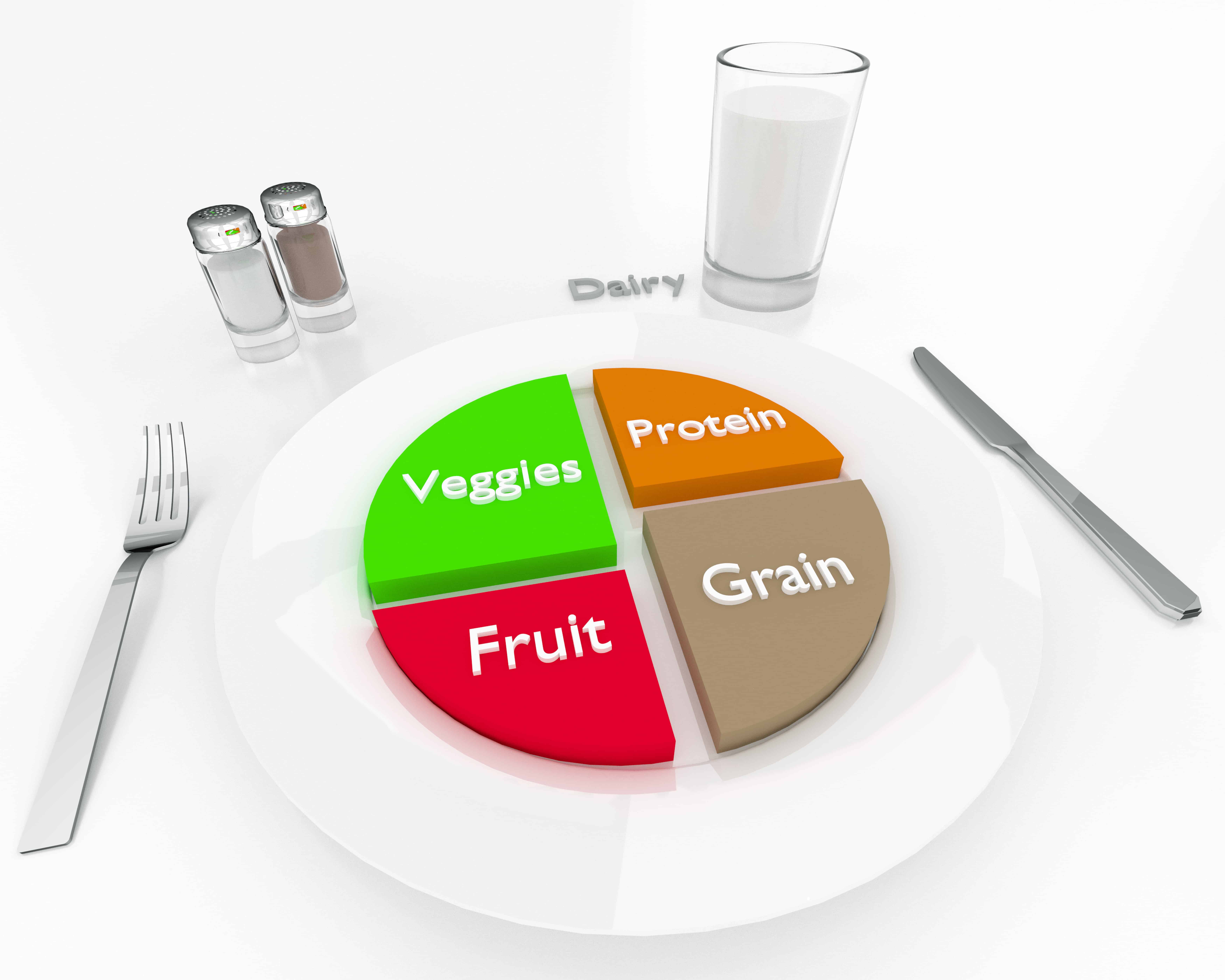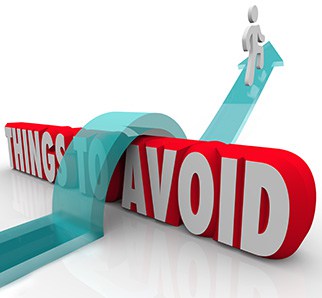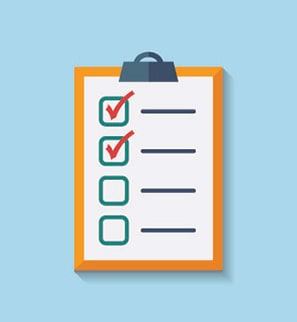Through twenty-five years of working with people with diabetes, when they come in for diabetes education, their first question is most often “What can I eat (or drink).” The next question is often, “What can’t I eat (or drink)?
In this article, we will explore what foods are best to eat when you have just been diagnosed with Pre-Diabetes, and Type 2 Diabetes, and what foods are best avoided.
Quick Links (click to jump to specific section)
There is no other guide available on the internet that will guide you through the best foods to choose, and the best foods to avoid. Take heed, as some foods in the American diet are detrimental. These are also the same foods that Americans are addicted to.
On occasion, you will be able to eat from the foods to avoid list, such as on a holiday, or your birthday. It shouldn’t become a regular occurrence to eat foods that are best avoided if you have Pre-Diabetes or Type 2 Diabetes. Also, eating healthier throughout your lifespan, can prevent Pre-Diabetes and Type 2 Diabetes from ever surfacing at all.
Starting to eat a healthy diet can help you to reverse your Pre-Diabetes, along with regular physical activity, and sometimes medication (most often Metformin). You can either get Type 2 Diabetes in good control, or you can reverse it to a Pre-Diabetes state in some cases, if you work on healthy lifestyle changes.
Though it’s not always possible to reverse Type 2 Diabetes, it is certainly worth a shot. My new book to come out soon, entitled, “The Practical Guide for the Reversal of Pre-Diabetes and Type 2 Diabetes,” published by The Diabetes Council, will explore this topic in depth. Stay tuned!
Contents
Eating appropriate foods
Knowing which foods to eat, and which ones to avoid, can help you to manage your blood sugars, and avoid the long-term complications of diabetes. Keeping your blood sugars in your target ranges will help you to feel better on a daily basis also, as elevated blood sugars can make you moody, and even depressed. This can affect your performance in school, or a work.
Overall healthy choices over the long haul make the biggest difference, along with counting the carbohydrates in foods that contain them. Eat a variety of whole grain foods, seeds, nuts, low-fat or lean protein foods, and a small amount of good fats, and fresh fruits every day.
In general, keep carbohydrates to your recommended amounts. Stay away from soft drinks, sugary candies, processed foods, such as chips. Carbohydrates are also found in breads and grain foods, pastas, rice products, milk products, other sweets and confections, fruit and fruit juices, as well as in starchy vegetables such as potatoes, corn, and beans.
What you should avoid are fats that are considered unhealthy, such as Trans Fats, processed and refined sugars, liquidy sugars, grains that are not whole grain, and are heavily processed, and any other foods that contain refined carbohydrates.
Work with a Certified Diabetes Educator to determine how many carbohydrates you need at each meal and snack. Generally, carbohydrates per meal for women are 30-45 grams, and men should have 45-60 grams at each meal. Snacks should be 15 grams for women, or 15-30 grams for men. Your CDE or doctor may want you to eat a different amount of carbohydrates, based on your individual needs.
I recommend reading the following article:
Understanding portion control

Request the nutritional information, and you will be surprised that though a salad is healthy, there are many different and varied ingredients in the salad, and combined with the dressing, the salad may be way off the charts in terms of carbohydrates. Nutrition is tricky. Let’s help you make some sense of it.
The role of sugar
Sugar from metabolism of carbohydrate-containing foods breaks down during the process of digestion in the stomach. The sugar enters the blood, and then travels to the body’s cells to be used for energy.
If there is not enough insulin, or if the insulin is not working properly, as is the case in Pre-Diabetes and Type 2 Diabetes, then blood sugar levels remain high, and blood sugar doesn’t get into the cells to be used for energy.
The high levels of sugar in the blood cause damage to body cells and organs over time. Sugar is necessary for life, but when our body doesn’t process it correctly, then we can develop health problems from high sugars.
List of foods you should eat when you’ve been diagnosed with Pre-Diabetes and Type 2 Diabetes
The following is a list of lower glycemic index foods from each food group, which will help to keep your blood sugar in your target ranges. Low glycemic index foods don’t raise your blood sugar as fast as high glycemic foods, and that’s important when you have Pre-Diabetes or Type 2 Diabetes.
If you don’t eat the right foods most of the time, it can cause you to have high blood sugars, which over time, leads to inflammation of tissues, increasing the risk for cardiovascular complications and other complications from diabetes.
Conversely, if you eat the wrong foods on a rare occasion, such as the holidays, you will still be able to get good management of your blood sugars, and live healthy with your diabetes. You may be able to reverse your Pre-Diabetes or Type 2 Diabetes. This is not possible in all cases, but it is possible for some people.
Foods that contain carbohydrates, either simple or complex, break down in the body to sugar or glucose molecules. Therefore, of all the macronutrients that we need, including carbohydrates, fats, and proteins, carbohydrates break down to sugar the fastest, therefore they have the most affect on blood sugars. Carbohydrates are found in all foods that are classified as sugar, fiber, or starches. Fiber, however, takes longer to break down into sugar.
Starches and carbohydrates
Though we watch our amounts of carbohydrates when we have diabetes, we still need a substantial amount of our food intake to be from carbohydrates.
Whole grains
Whole grains are an excellent way to get extra fiber. Our digestive system wins when we eat high fiber, and our blood sugars stay steadier. We don’t feel as hungry, as fiber fills us up. The best ones to have in your pantry to eat in small amounts are:
- Brown rice, wild rice
- Whole wheat breads and snacks (look for 100% whole grains, very little or no added sugars)
- Cereals that are whole grain
- Pasta that is whole wheat
- Oatmeal, amaranth, millet, or quinoa
Sweet potato
A small baked sweet potato is also a good source of fiber, and healthy carbohydrates. Remember that these foods are still carbohydrates. Therefore, you must count them toward your allotted carbohydrates at meals and snacks.
Vegetables
Vegetables in a harvest bounty of colors and varieties are a great way to get fiber, with very little carbohydrates, fat, or sodium (salt) content. Remember that for starchy vegetables, such as potatoes, corn, and beans, you must count carbohydrates.
For all intensive purposes, vegetables that are not in the “starchy vegetable” category, are considered “free.” In other words, you don’t have to count the carbohydrates in these vegetables because there are so few carbohydrates in these foods.
The following is a list of vegetables to eat that are loaded with nutrients and fiber. Choose from fresh and frozen varieties (without added sugars or sauces). If you eat canned vegetables, choose low or no sodium varieties, and rinse vegetables in water to remove any excess salt. This list contains only non-starchy vegetables:
- Fresh, frozen, or low- no- salt canned greens
- Spinach, turnip, collard, kale, swiss chard, spinach
- Broccoli
- Cauliflower
- Brussel sprouts
- Asparagus
- Cucumbers
- Peppers
- Onions
- Artichokes
- Squash (yellow, zucchini)
Fruits
Fruits and fruit juices do have carbohydrates. Fresh or frozen fruit is better than canned fruit, although fruit canned in water, or its own juices is okay. You may want to rinse excess sugar from the juice off the canned fruit. Avoid juice, except during an episode of low blood sugar, where four to six ounces should be enough to correct it, at about 15-20 grams of carbohydrates per serving.
Fruit is a good high-fiber choice when you need something sweet, as opposed to a high-sugar dessert. They can curb sugar cravings for sweeter foods, and by choosing them well, you will get a variety of vitamins, minerals, and antioxidants from fruit.
Fruit smoothies can be a healthy option if they are made with healthy ingredients, not too many carbohydrates, and they contain protein, such as yogurt. Protein will help slow blood sugar spikes.
Some of the best fruit options for diabetes include:
- Strawberries, blueberries, raspberries, blackberries
- Apricots (skin on)
- oranges
- cherries
- Apple (skin on)
- Peaches (skin on)
- Pears (skin on)
- Bananas
- Kiwi
- Watermelon, honeydew melon, cantaloupe
- Grapefruit
- Grapes (green, red, seeds or no seeds)
Fresh fruit
Fresh fruit is the best option. It is higher in vitamins and minerals than frozen or canned fruit. It’s a good idea to visit a fresh produce stand, or a farmer’s market to get the best fruits in season.
Frozen fruit with no added sugar
Frozen fruit with no sugar added to it is the next best option. When the fruits that you like are no longer in season, pick up some frozen fruits to make sure that you get enough of this food group.
Protein
Protein foods are necessary for a healthy diet. They help you to feel full, and you don’t have to count carbohydrates for them unless you put a sweet sauce on them, or bread and fry them. The best way to have your protein is baked, grilled, or broiled. Lean protein foods have fewer saturated fats than meats that are more “fatty,” such as bacon.
For more informative articles I suggest the following:
Protein foods to eat when you have Pre-Diabetes or Type 2 Diabetes
- Salmon and other fatty fish
- tuna packed in water
- Turkey (skin off)
- Chicken (skin off)
Protein foods to eat if you are vegetarian with diabetes
When you are a vegetarian with diabetes, it can be a little more challenging to get your protein foods.
Plant-based proteins
If you are a vegetarian, eating meatless proteins can help you to get your needed protein. You can choose from:
- Greek yogurt (non-fat, plain)
- Beans and other legumes
- Natural almonds and walnuts, or other unsalted nuts
- Tofu
- Eggs
- Yogurt (plain)
Dairy
Low-fat dairy products are fine for diabetes in moderation, and eating a few servings a day can help you to lose some weight.
Dairy foods to eat when you have Pre-Diabetes or Type 2 Diabetes
- Skim milk
- Nonfat plain Greek yogurt
- cottage cheese (non-fat)
- Reduced-fat cheese (in moderation)
- Sour cream (non-fat)
Healthy fats for diabetes
When you have diabetes, it’s best for your heart to avoid fats are saturated, or Trans fats. We all need some fat to carry our vitamins and minerals around, to help us feel full, and even to lose weight. The best fats for people with diabetes are monounsaturated fats, followed by polyunsaturated fats.
Fats to eat if you have Pre-Diabetes or Type 2 Diabetes
- Nuts (walnuts, pecans, pistachios, almonds
- Peanut butter, or other nut butters
- Olives
- Oils (seed and nut oils, plant based oils – olive, corn, soybean, sunflower, Edamame
- Seeds (sesame, chia, flax, sunflower
- Salmon, Tuna, and other fatty fish
- Tofu (not fried)
Drinks
A large majority of the time, drink water. You may have diet drinks, or unsweetened beverages. You can use artificial sweeteners in your drinks, as benefits outweigh any risks of using sweeteners with diabetes.
List of foods you should avoid if you have Pre-Diabetes or Type 2 Diabetes
You should avoid having too many starches or carbohydrates of any kind. It won’t matter that you are eating the right kinds of carbohydrates, if you eat too many. There are also unhealthy versions of almost every food.
Starchy Vegetables
Starchy vegetables are not like the vegetables on the list of foods to eat with diabetes, but they can be eaten in moderation. You should count carbohydrates when you eat these foods.
- Peas
- Beets
- Sweet potatoes
- Corn
- White potatoes
Fruits
Avoid dried fruits. They have had the water taken out of them, and they are very concentrated with high sugar content. A serving size of dried fruit would only be about a tablespoon, so it’s important that if you do eat it on an occasion to keep portion sizes very small.
Canned fruits are not the best choice for diabetes. If you must pick up canned fruits, get them packed in water or in their own juices, and rinse them off. Juices don’t have any of the healthy fiber in whole, fresh fruits, and they have high sugar content, so avoid them as well.
Fruits to avoid with Pre-Diabetes or Type 2 Diabetes
- Dried fruit
- Packaged juices
- Fresh juices that are part of fad cleanses
- Canned fruit in syrup
Starches
We must have carbohydrates for energy. That said, we must choose wisely when we have diabetes. Try protein and non-starchy vegetables for snacks, instead of high carbohydrate snacks.
Starches and carbohydrates to avoid when you have Pre-Diabetes or Type 2 Diabetes
- All processed grains
- Cereal with no whole grains and added sugars
- White bread
- White flour
- French fries
- White flour tortillas
- Packaged snacks high in salt and carbohydrates
- Pretzels
- Crackers
- Graham crackers
- White rice
- White pasta
- Pastries and confections
Protein
Bacon and other meats that are smoked, or processed contain lots of salt, too. Salt can increase your blood pressure and lead to heart disease. Avoiding things like processed deli meats, ham, bacon, bologna, and the like will help you keep your salt content in a better range. These meats are often also high in saturated fats.
Protein foods to avoid if you have Pre-Diabetes or Type 2 Diabetes
- processed meats of all types
- Hot dogs
- pepperoni, salami, sausage
- Beef jerky
- Bacon
- Nuts with sweet or salty coatings
- Protein shakes or smoothies with added sugar, and too many carbohydrates
Fried meats
When you bread and fry your meat, you add carbohydrates to a naturally low carbohydrate food. You also add fat. That’s not to say that you can’t occasionally eat a piece of fried chicken, or a fried pork chop. Remember that when you do, you should eat the rest of your meal in low carbohydrate vegetables. You have already had your fat serving, and probably all your carbohydrates in just one portion of fried meat. It’s not that much bang for your buck.
Pork
Lean cuts of pork are fine with diabetes. Choose center cut, boneless pork chops, or a tenderloin roast. Sliced pork chops and other pork cuts are sometimes high in fat, so it’s best to stick with leaner cuts, or trim excess fat off of your meats.
Deep fried fish, tofu
Deep fried fish and tofu tend to cancel out any of the good the fish or healthy tofu may do. However, if you wish for an occasional piece of fried fish, or other seafood, then you can have it. Treat it about like the fried chicken we talked about above.
High fat content meat
Meats that are not lean, and contain visible fat marbled through the meat, should be avoided most of the time. They are high in saturated fat.
Dairy to avoid if you have diabetes
Full-fat dairy products are not the best for diabetes. Try organic milk for a richer tasting non-fat milk, or start by moving gradually from higher fat milk to fat-free milk. In regard to milk, 1% or 2% organic milk can be tried for the richer taste. Some people complain that skim milk tastes like water, and this is an excellent tip to get you off high-fat milk.
Avoid these high fat dairy foods if you have Pre-Diabetes or Type 2 Diabetes
- Chocolate, strawberry, or other flavored milks
- Whole milk or 2% milk
- Reduced fat or full fat cottage cheese
- Low-fat or full fat yogurt
- Full fat cheeses
Fats
Trans Fats should be out of our food chain by 2018. Until then, avoid foods that contain partially hydrogenated oils.
Fats to avoid if you have Pre-Diabetes or Type 2 Diabetes
- Frozen foods
- Donuts
- Coffee creamer
- Packaged and processed foods
- Cakes
- Pies
- Pastries
- Margarine
- Oils that are partially hydrogenated, or do not originate from seeds, nuts, or plant sources
Drinks
Drinks can be loaded with sugar. When I hold up a 16-ounce Coke, showing that it has a full 15.5 teaspoons of sugar, that usually gets the attention of a person with diabetes. Many beverages have high sugar content. They are even more surprised when they see a 20-ounce Mountain Dew with 18.5 teaspoons of carbohydrates.
When they learn to count carbohydrates, they realize that drinking 4-20 ounce sodas per day is why their blood sugar is so high. Often, stopping sweetened drinks, and sodas can end up helping the person with newly diagnosed Pre-Diabetes or Type 2 Diabetes get things under control, or even reverse their condition. Sometimes, they are drinking so much sugar, that their pancreas starts to wear out.
Drinks to avoid if you have Pre-Diabetes or Type 2 Diabetes
- All sodas, except diet sodas
- All sweetened beverages including:
- Tea
- Lemonade
- Fruit juices
- Coffee with sugar, or flavored coffee drinks such as cappuccino, Frappuccino, etc.
Further reading:
Over to you
We hope that you have learned the best foods and the worst foods for you to eat with your newly diagnosed Pre-Diabetes, or Type 2 Diabetes. Remember that when we have diabetes, we must make some healthy lifestyle changes even though it might be hard. Eating healthier is part of it, as is getting regular physical activity, and taking medications for your diabetes if your doctor prescribes it. Let us know if this list helped you to figure out what to keep in your pantry, and what to leave on the store shelf. If you feel that we left anything out, you can comment about that too, in the comment box below.
TheDiabetesCouncil Article | Reviewed by Dr. Christine Traxler MD on May 23, 2020










